The ultimate hack: learning how to live while trying not to die
And also, recipes for veggie mash and our daily smoothies
I had some exciting news that I didn’t have a chance to share last week – I hit 1000 subscribers!
And I guess I should have figured out a way to finish up my post and share it with the world, before the inevitable drop back down to 999.
Oops.
After 30 years in marketing, I know (I know!) growing this Substack means promoting it—something I’ve been mostly unwilling to do. Occasionally, I’ll post something on LinkedIn when I feel like I’ve got something really interesting to offer, and that usually nets a few new subscriptions. But mostly, I try to steer clear of looking too closely at the resulting metrics. I remind myself that writing here is about my own growth versus growing a subscription base—even if deep down I know I’m also trying to protect my own ego. (“Hey, I’m not even trying to grow subscribers—so, what did you expect?!”)
Subscriber churn, I suspect, is tied to why someone might be drawn here in the first place. If you’ve subscribed in hopes of reading about a miracle cancer cure, it’s unlikely you’ll be reading for long. I’m sure that others find this Substack too cancer-focused…or not cancer-focused enough.
I’ve started to wonder if it’s just a little unfocused in general—I mean, what is this even about?

Is this still a “cancer blog”? Is there a way for it (or for me?) to become anything else after so many years in treatment, and when it’s still so regularly on my mind?
If Strive for Five was specifically about healing via a look back at a four-year cancer journey, what am I trying to do now? One answer conveniently lies in the tagline we wrote when we started my original blog:
Learning how to live while trying not to die.
There’s a helpful double urgency that comes with cancer (and maybe especially for someone like me who took four recurrences to really learn what I was supposed to be taking away):
The urgency to be proactively healthy to prolong life (or, at minimum, to generate a false sense of control, which probably deserves another whole post dedicated to it)
The urgency to fully enjoy living the life you have, while you have it
For me, this means constantly weighing what’s good for me versus what’s good for my appetite, our schedule, the reality of life in general. I’m always looking to hack my way toward a better, healthier life.
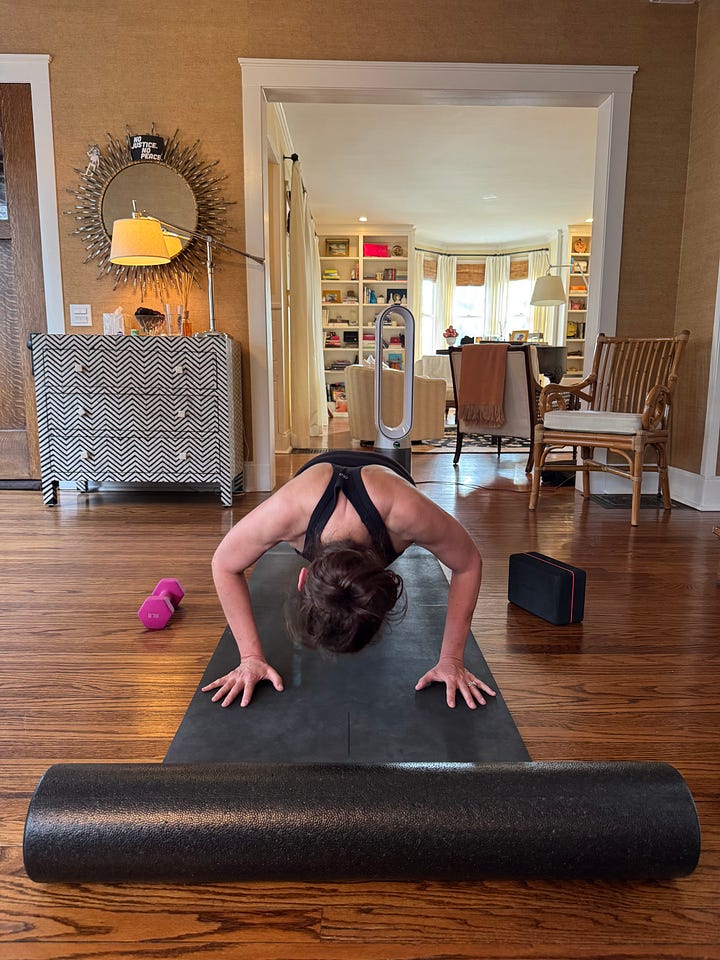
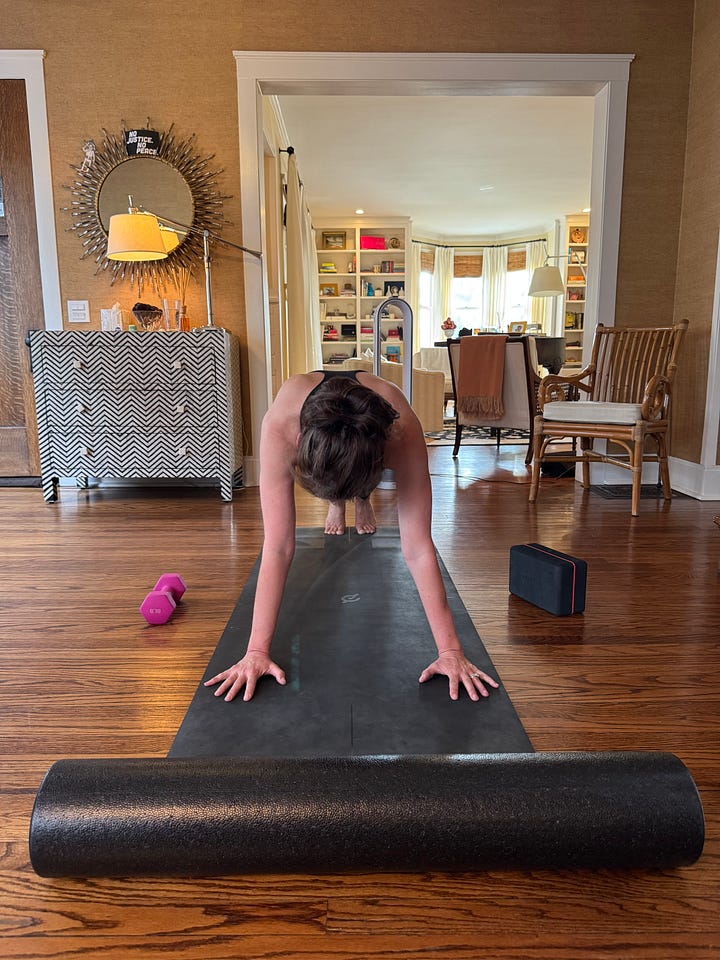
Regarding the recipes that I shared last time, more than one person commented something along the lines of, “They looked good but like a LOT of work.”
Fair enough! I like cooking, which factors into the equation—and Per makes most of our dinners, which factors into it even more. Still, every time we make a new recipe, I wind up asking myself, “Is this good enough to justify the time it takes to make it?” If the answer is no, we won’t make it again—and I absolutely won’t share it.
Which brings me to our ultimate hack: the kefir-yogurt-fruit-and-veggie-mash smoothies we’ve been having pretty much daily since last summer.

Smoothies were already in rotation by the time I happened upon a recipe for veggie mash. I had just read a book about the link between gut microbiome diversity and practically everything else (including digestive regularity, clear skin, anxiety and even colon cancer); this apparently put me in a receptive frame of mind for something that sounded kind of gross.
But we were in Wisconsin with access to an incredible farmers market, so we decided to give it a try, and have been incorporating it into our daily smoothies ever since.
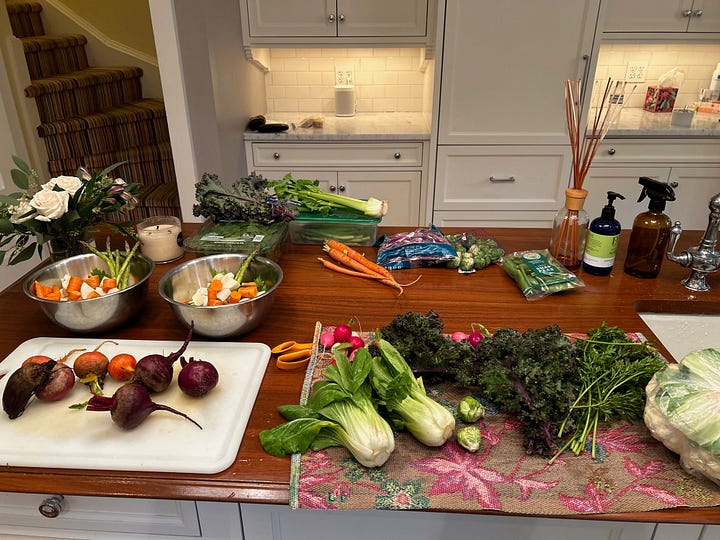
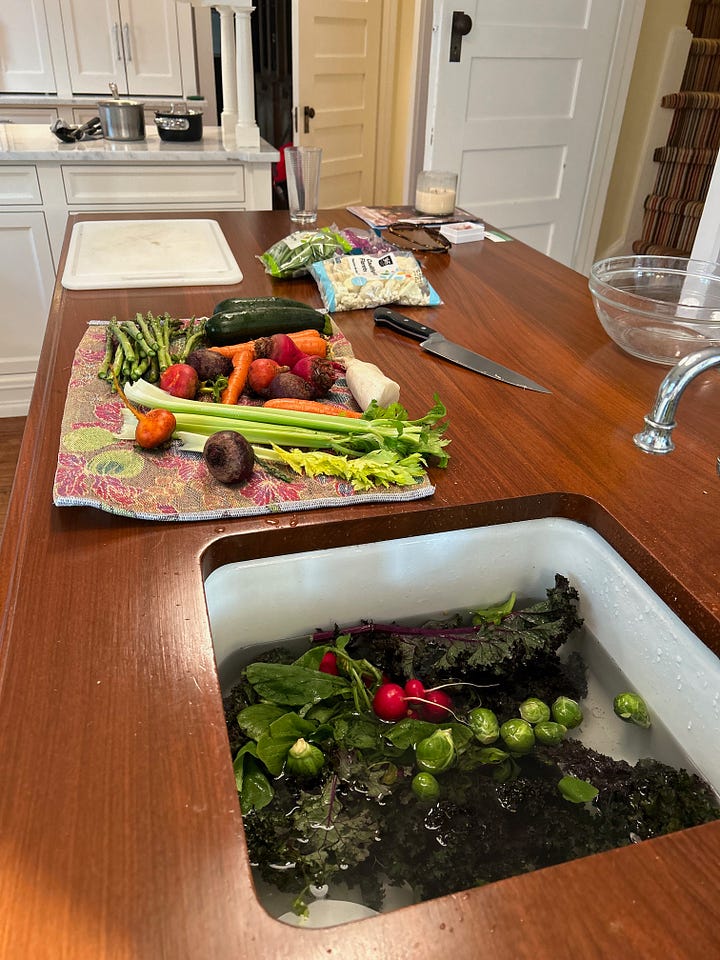
Granted, our smoothie habit doesn’t exactly constitute a clinical trial, and better moods might well be attributed solely to the twins no longer being in 7th grade—but the number of tummy ache complaints and time spent in the bathroom absolutely decreased across the whole family. And, the smoothies are simple enough—and enjoyable enough—to have become a permanent fixture in our lives.
To make veggie mash, you select 14+ different fresh vegetables you don’t normally eat and process them into a blend, then freeze in portions. Eating just a tablespoon a day exposes you to a variety of plants you probably wouldn’t otherwise get. Various articles suggest using the mash in smoothies, soups, or sauces. We’ve had the best luck with smoothies (where a date masks their veggie-ness) or quesadillas (where cheese and salsa do likewise).
The kids complained about it at first; but we started them off with just a little and have now built our way up to a tablespoon per smoothie without complaint.
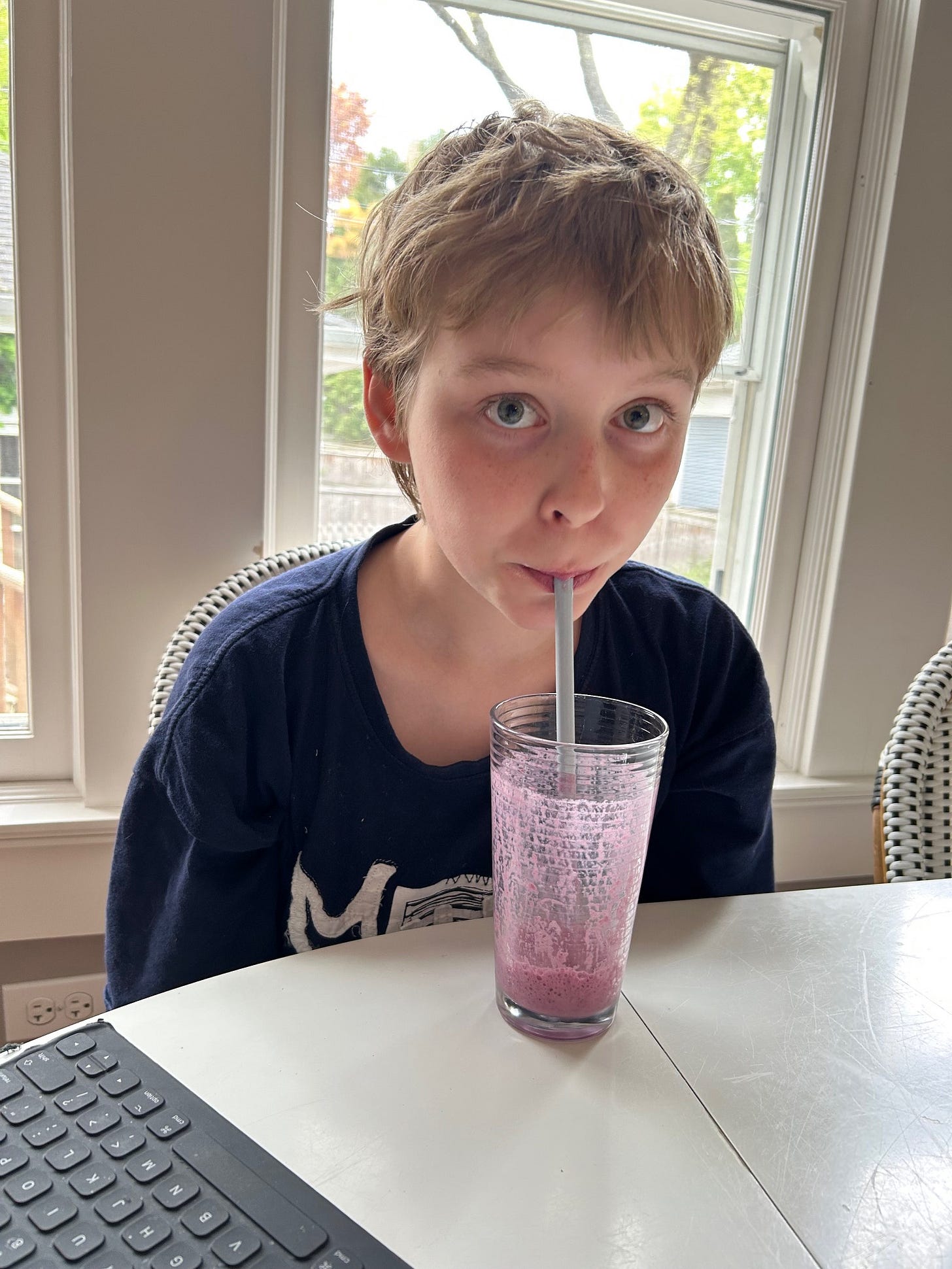
The smoothies are made like this, per person:
One scoop yogurt, half a banana, half cup of mixed berries (leaning toward blue and purple ones) and/or other fruit we may have on hand, a big spoonful of collagen powder, a big spoonful of veggie mash, half a date, and kefir filled to just past the ingredients in the blender.
Here is our base veggie mash recipe. It’s flexible: you can swap out ingredients and also add ginger, turmeric, or herbs of any kind. The key is just incorporating nutritionally rich things you aren’t already eating regularly.
Ingredients - our best batch to date:
Kale – a few big handfuls (we use Lacinato because we use green kale semi-regularly)
Purple cabbage – a small bag
Two kinds of beets – e.g. golden and red, two or three each
Sugar snap peas – a small bag
Three carrots with greens
Three stalks of celery with greens
Kohlrabi – one
Brussels sprouts – about a pound
Bok choy – two or three heads, depending on size
Cauliflower – one small
Asparagus – one bunch
Radishes – small bag
Clean all vegetables in the sink, rinsing well. Cut anything larger into processor-friendly chunks (e.g. carrots, celery, asparagus, cauliflower). Then, use a food processor to chop everything together, a few handfuls of various vegetables at a time, emptying into a large bowl and stirring as you add each batch of newly processed vegetables to mix the various components together.
Once finished, freeze in small containers—we use half-cup and leftover deli containers—or freezer bags. Defrost or break off sections to incorporate as needed.
The process will take you an hour or two, depending on the size of your food processor (I used a Cuisinart mini-prep, which I do not recommend). It may sound like a lot of work, but a supply should last you literally for months.
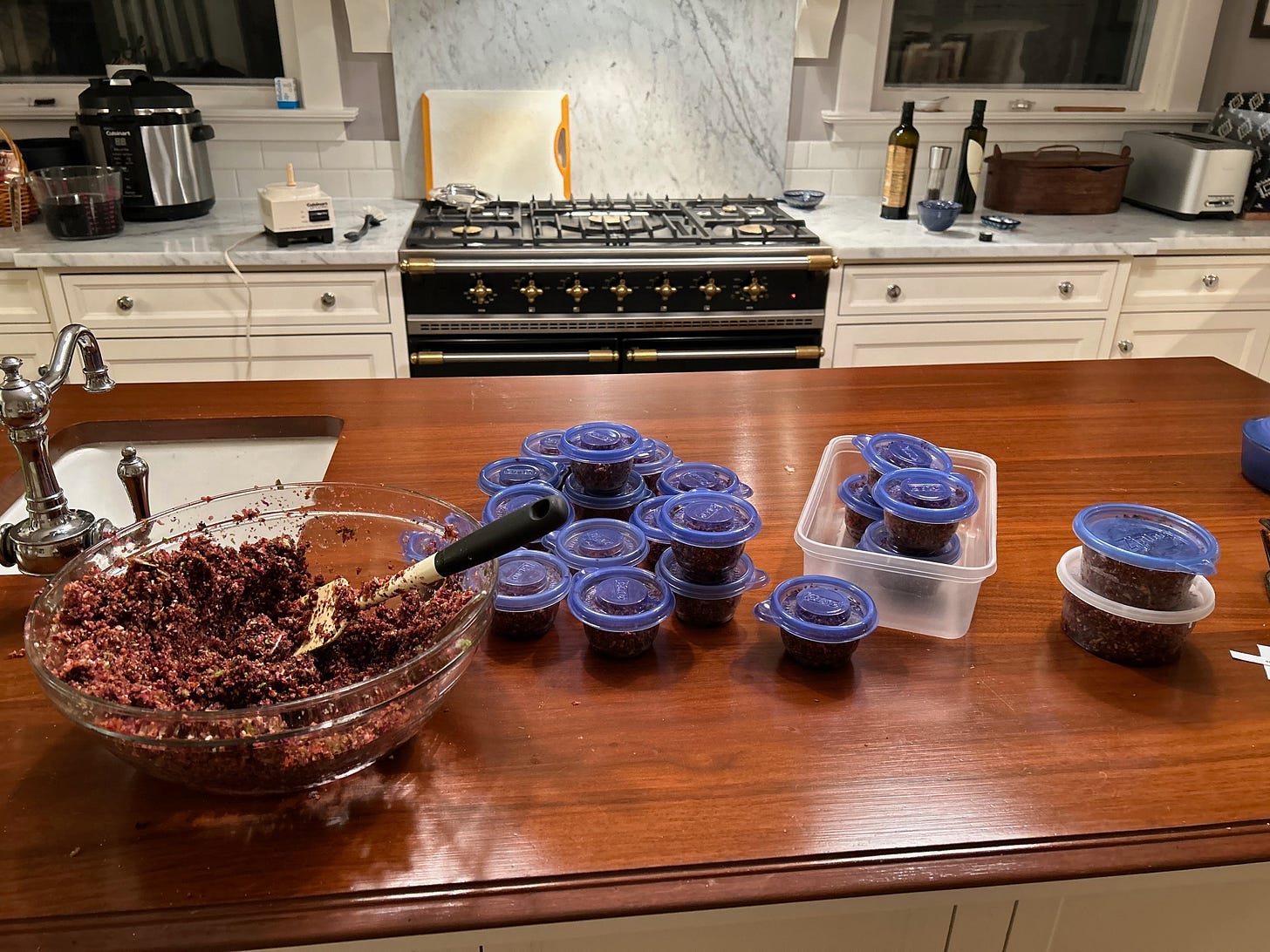
Last batch, we made some adjustments based on what was in stock at the market with no complaints:
Subbed zucchini for bok choy
Subbed daikon radish for kohlrabi
Used a whole head of red kale vs a small bag
I’d recommend avoiding green or purple beans, which taste super vegetal prior to cooking. I also prefer cauliflower to broccoli and purple to green cabbage—both yield a more neutral flavor. Recipes online also recommend avoiding nightshades including tomato, pepper, eggplant and potato, which may not be easy to digest, especially raw.
I’m sure there are better ways to start the day—a friend of mine starts each morning with a salad—but consistency counts. A smoothie with veggie mash has become an easy way to start my day with positive nutrition, which also makes it more likely that I’ll keep making positive decisions.
And one of those positive decisions is to keep taking my coffee with heavy cream and a little sugar—because life is also too short to give up great coffee.
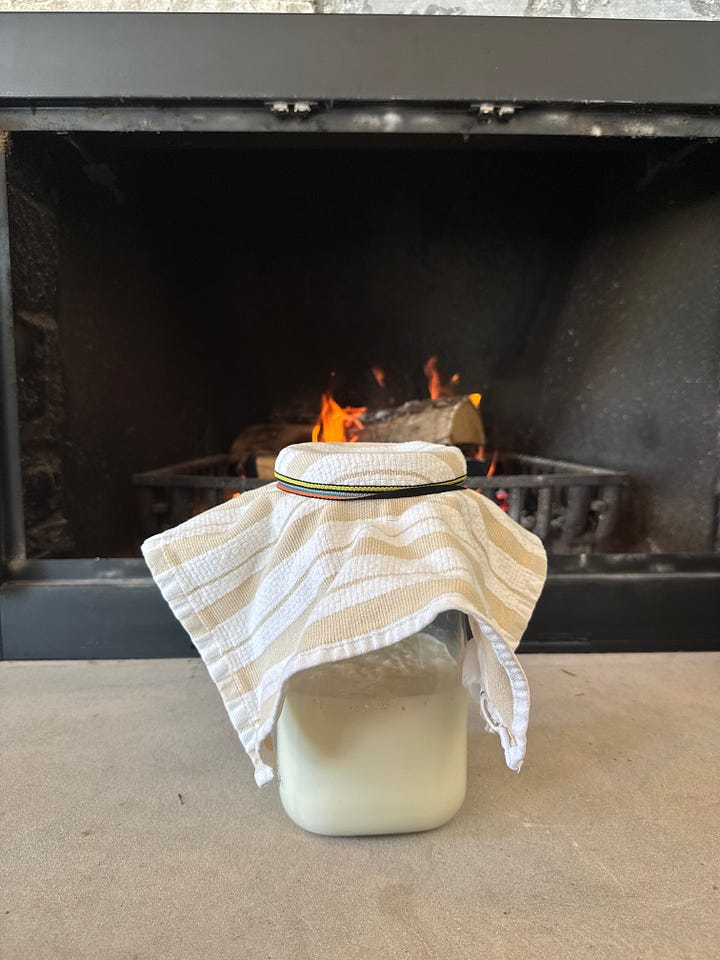
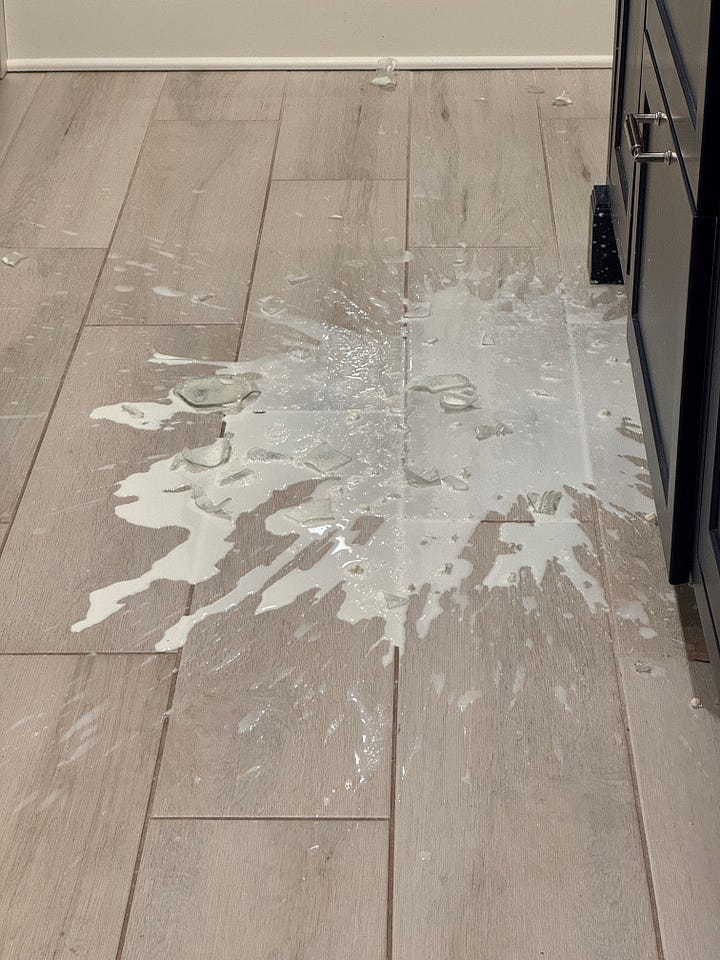



Congrats on no recurrence, hoping for that one day! Veg mash= mega great idea 👍
Congratulations to the twins!